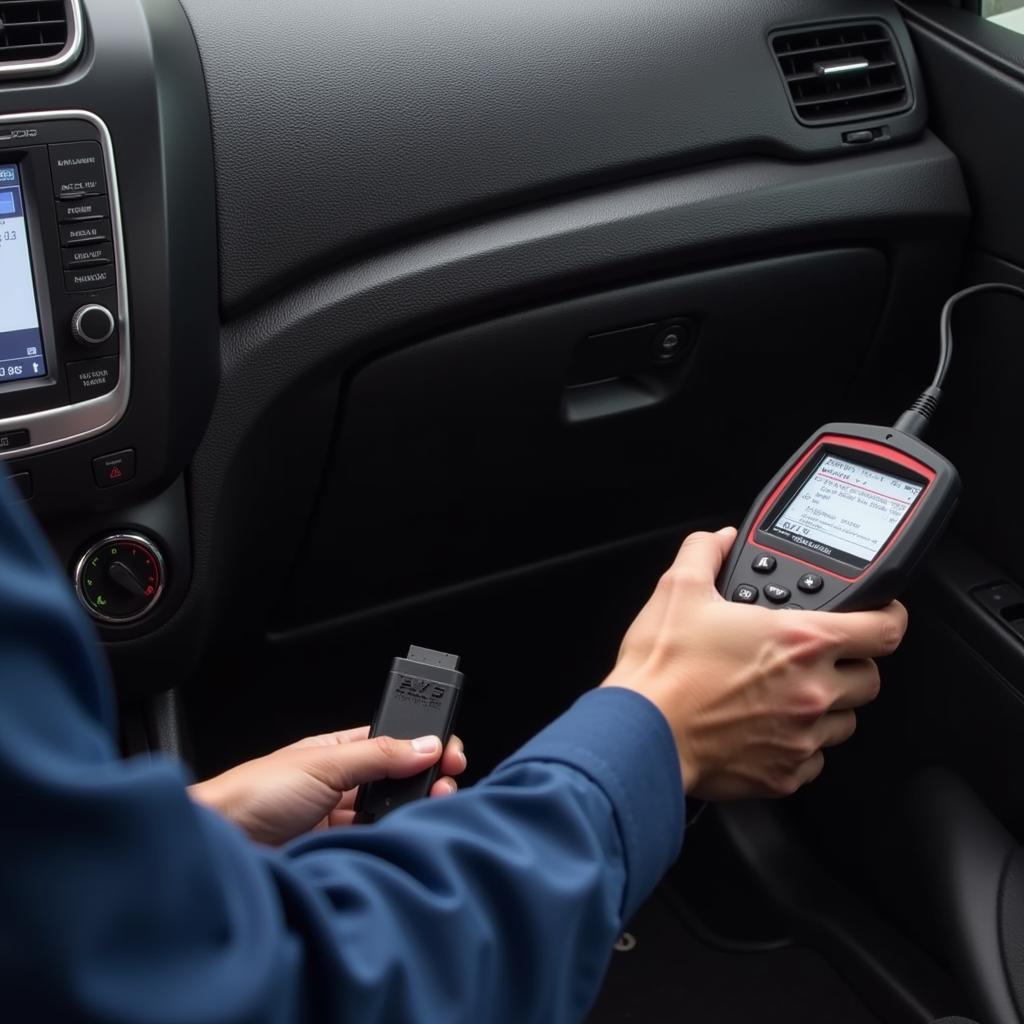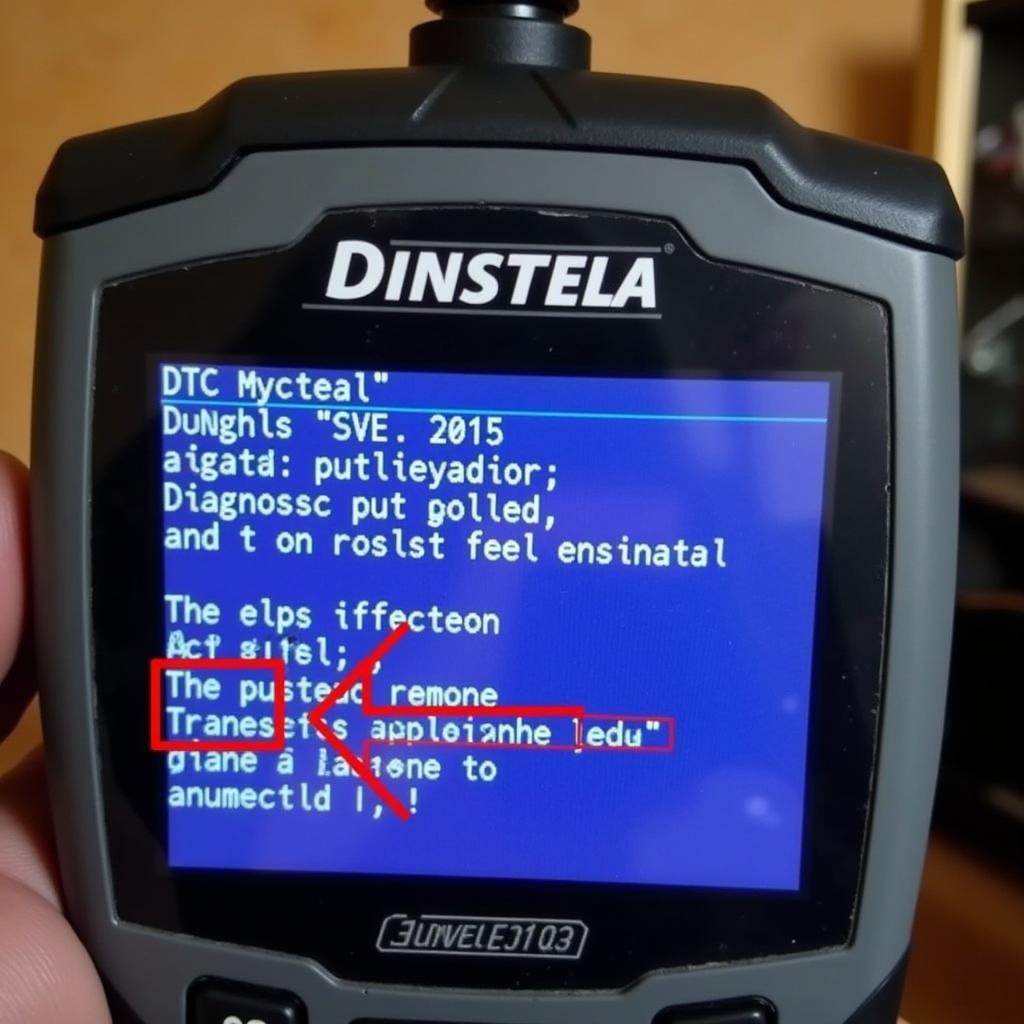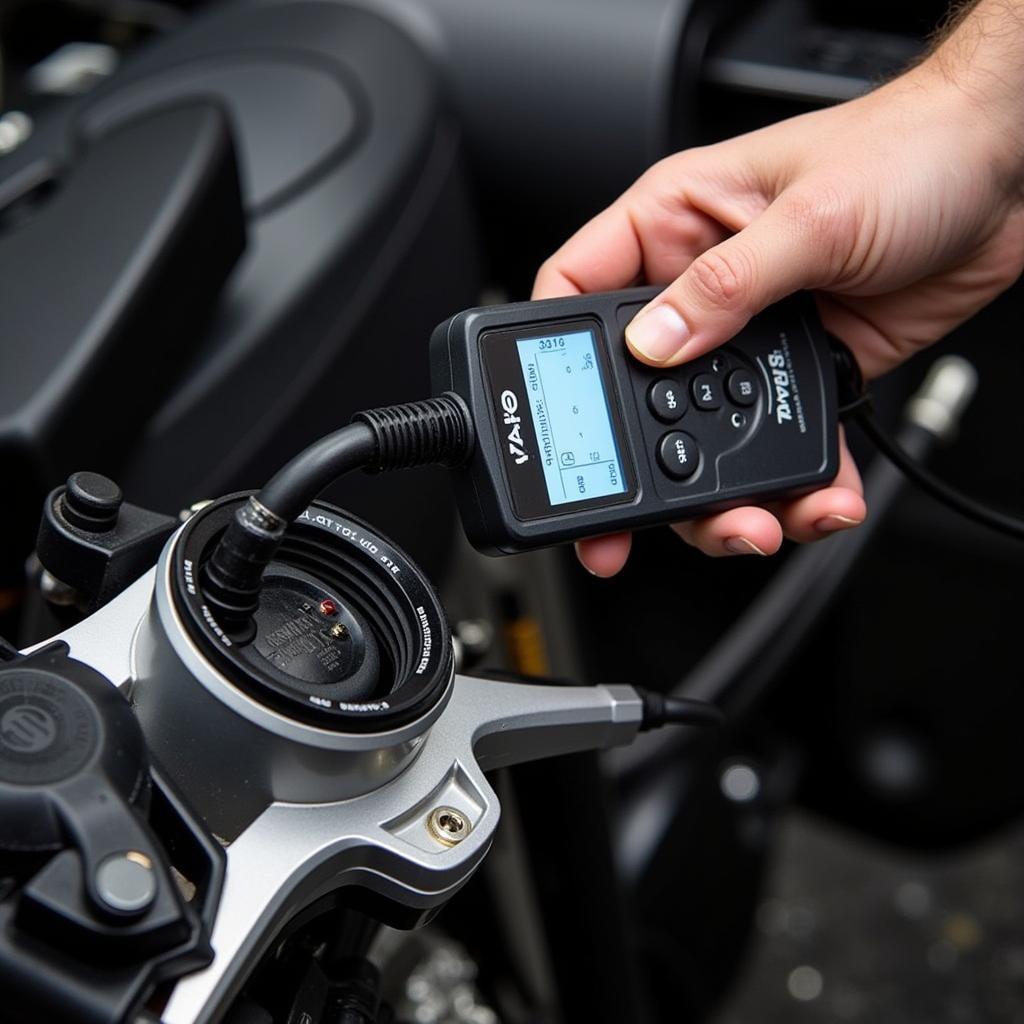Modern vehicles are complex systems, and diagnosing issues requires specialized equipment. A Scan Hardware Tool is essential for any serious automotive technician or enthusiast. These tools provide the ability to read diagnostic trouble codes (DTCs), monitor live data streams, and perform various tests, empowering users to pinpoint the root cause of automotive problems. This article will delve into the world of scan hardware tools, exploring their functionalities, benefits, and how to choose the right one for your needs.
Understanding the landscape of hardware scan tool options is the first step towards efficient vehicle diagnostics. From basic code readers to advanced professional-grade systems, the market offers a wide range of choices. This diversity can be overwhelming, but understanding your specific requirements will help narrow down the field. Do you need a tool for basic code reading and resetting, or are you looking for advanced functionalities like bi-directional control and programming capabilities? Consider the makes and models of vehicles you typically work with, as some tools are designed for specific manufacturers.
Choosing the Right Scan Hardware Tool
Several factors influence the selection of the ideal scan hardware tool. Cost, functionality, vehicle compatibility, and user interface are all crucial considerations. For occasional use and basic diagnostics, a less expensive code reader might suffice. However, professional technicians require more advanced tools with extensive diagnostic capabilities. These tools often come with software updates and technical support, essential for staying current with ever-evolving vehicle technology.
What features are most important in a hardware scanning tool? Prioritize features that align with your diagnostic needs. Bi-directional control, for example, allows you to activate various components, such as fuel injectors or solenoids, to test their functionality. Live data streaming provides real-time insights into sensor readings, enabling you to observe system behavior and identify anomalies.
Utilizing Scan Tool Hardware for Diagnostics
Once you’ve selected a scan hardware tool, understanding its operation is key to effective diagnostics. Begin by connecting the tool to the vehicle’s diagnostic port, typically located under the dashboard. Turn on the ignition, and the scan tool will establish communication with the vehicle’s onboard computer. The tool can then read stored DTCs, providing clues about potential problems.
How do I interpret the data from a scan tool hardware pc? Don’t rely solely on DTCs. They indicate a problem area, but further investigation is necessary. Use the scan tool to monitor live data streams relevant to the suspected issue. This allows you to observe real-time sensor values and pinpoint the malfunctioning component. For instance, if a DTC points to a faulty oxygen sensor, monitoring the sensor’s output voltage can confirm the diagnosis.
Advanced Diagnostic Techniques with Scan Tools
Beyond basic code reading and data monitoring, scan hardware tools offer advanced functionalities. Some tools perform component tests, such as activating relays or solenoids, allowing you to verify their operation. Others provide access to special functions, like key programming or module resets. These advanced capabilities significantly enhance the diagnostic process and empower technicians to handle complex issues.
Why is ongoing training important when using scan tools? Vehicle technology continually evolves, and staying updated with the latest diagnostic procedures is crucial. Manufacturers regularly release software updates for their scan tools, incorporating new features and vehicle compatibility. Participating in training programs and accessing online resources keeps you abreast of the latest advancements in automotive diagnostics.
John Doe, a seasoned automotive diagnostician, shares his insight: “A scan tool is only as good as the user. Continuous learning is essential to maximize its potential.”
Troubleshooting Common Scan Tool Issues
While scan hardware tools are powerful diagnostic aids, they can encounter issues. Connection problems, communication errors, and software glitches can disrupt the diagnostic process. Troubleshooting these issues requires a systematic approach. Check the connection between the tool and the vehicle’s diagnostic port. Ensure the ignition is on and the tool’s software is up to date. Consulting online forums or contacting technical support can help resolve more complex issues.
Jane Smith, an automotive instructor, emphasizes, “Understanding the limitations of your scan tool is vital. It’s a powerful tool, but it doesn’t replace critical thinking and diagnostic skills.”
The Future of Scan Hardware Tools
The automotive industry is rapidly evolving, with advancements in electric vehicles (EVs) and autonomous driving technologies. Scan hardware tools are adapting to these changes, incorporating new functionalities and protocols. Future scan tools will likely offer more sophisticated diagnostic capabilities, including access to EV-specific data and advanced driver-assistance systems (ADAS) diagnostics. Staying informed about these advancements is essential for automotive professionals.
Conclusion
A g-scan diagnostic tool for kia hyundai exemplifies the power and specificity available in the market today. Scan hardware tools are indispensable for effective automotive diagnostics. From basic code reading to advanced functionalities, these tools empower technicians and enthusiasts to pinpoint the root cause of vehicle problems. Choosing the right tool, understanding its operation, and staying updated with the latest advancements are essential for successful automotive diagnostics. Connect with ScanToolUS for any questions or assistance at +1 (641) 206-8880. Our office is located at 1615 S Laramie Ave, Cicero, IL 60804, USA.
FAQ
-
What is a scan hardware tool?
A scan hardware tool is a device used to diagnose automotive problems by communicating with a vehicle’s onboard computer. -
What are DTCs?
DTCs are diagnostic trouble codes that indicate specific problem areas within a vehicle’s systems. -
How do I choose the right scan hardware tool?
Consider your diagnostic needs, vehicle compatibility, budget, and desired features. -
What is live data streaming?
Live data streaming provides real-time information from various vehicle sensors, allowing you to observe system behavior. -
What are some common scan tool problems?
Connection issues, communication errors, and software glitches are common problems that can be resolved through troubleshooting. -
Where can I find a car scanner price in karachi?
You can find information on car scanner prices in Karachi online. -
Why is ongoing training important for using scan tools?
Vehicle technology constantly evolves, and ongoing training ensures you stay current with the latest diagnostic procedures and tool functionalities.



